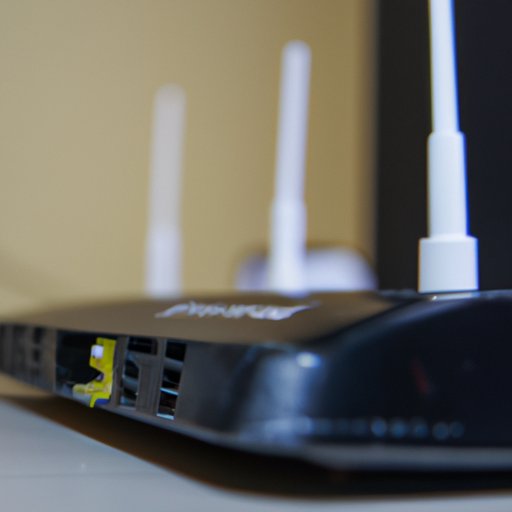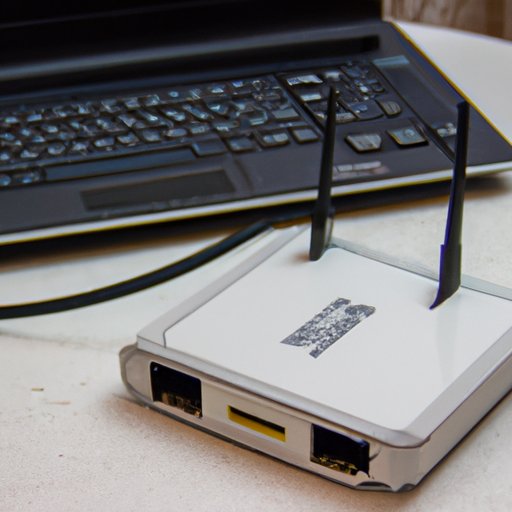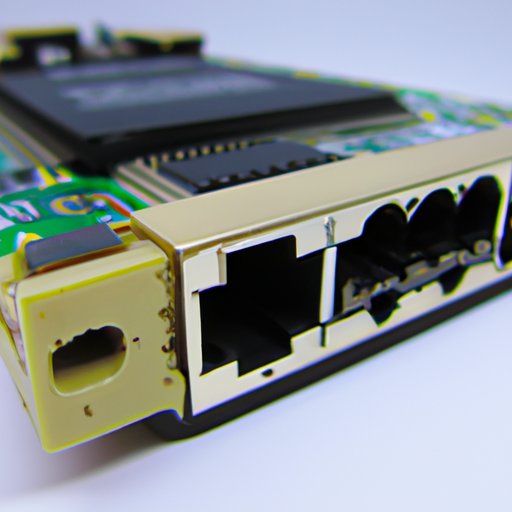Introduction
A modem is one of the most essential components of any modern computer network. It is responsible for transmitting digital signals over telephone lines, cable networks, and other communication mediums so that computers can communicate with each other. Understanding how modems work is important for anyone who wants to be able to set up and maintain their own network.
A Step-by-Step Guide to Understanding How Modems Work
In order to understand how modems work, it is necessary to first understand what data transmission is. Data transmission is the process of sending and receiving information between two or more computers. The type of data being sent can range from text messages to video files, and the speed of the transmission depends on the type of modem used.
Once the data has been transmitted, the modem then converts the signal into a form that can be understood by the receiving computer. This process is known as modulation and demodulation (modem for short). Modems can also be used to establish a connection between two computers, allowing them to exchange data over a network.
There are several different types of modems available on the market today. Each type of modem has its own set of features and capabilities, and understanding the differences between them is key to choosing the right modem for your needs.

Exploring the Different Types of Modems and How They Operate
The three most common types of modems are dial-up, cable, and DSL. Here is a brief overview of each type and how they operate:
Dial-Up Modems
Dial-up modems are the oldest type of modems and are still commonly used in rural areas where broadband connections are not available. Dial-up modems use analog signals to transmit data over telephone lines. The speed of the connection is much slower than other types of modems, but it is still an effective way to connect to the internet.
Cable Modems
Cable modems are the most popular type of modem and are used to connect to the internet via cable TV lines. Cable modems are capable of much higher speeds than dial-up modems, but they are limited by the bandwidth of the cable provider.
DSL Modems
Digital Subscriber Line (DSL) modems are used to connect to the internet over telephone lines. DSL modems are capable of much higher speeds than dial-up modems, but they are still limited by the bandwidth of the telephone company.
Fiber Optic Modems
Fiber optic modems are the newest type of modem and are capable of extremely high speeds. Fiber optic modems use light pulses to send and receive data and are capable of speeds up to 1 Gbps (gigabits per second). However, fiber optic modems are usually only available in certain areas.

Unpacking the Complexities of Modem Technology
Modem technology has advanced significantly over the years, and there are now several different technologies that are used to transmit data over telephone lines, cable networks, and other communication mediums. Here is a brief overview of some of the most common modem technologies:
Digital Subscriber Line (DSL)
DSL is the most common type of modem technology and is used to transmit data over telephone lines. DSL modems are capable of speeds up to 8 Mbps (megabits per second).
Asymmetric Digital Subscriber Line (ADSL)
ADSL is a variation of DSL technology and is capable of higher speeds than regular DSL. ADSL modems are capable of speeds up to 24 Mbps.
High Speed Packet Access (HSPA)
HSPA is a type of modem technology that is used to transmit data over cellular networks. HSPA modems are capable of speeds up to 7.2 Mbps.
Long Term Evolution (LTE)
LTE is the latest type of modem technology and is used to transmit data over cellular networks. LTE modems are capable of speeds up to 100 Mbps.

The Basics of Connecting to the Internet with a Modem
Connecting to the internet with a modem is relatively straightforward. First, you need to establish a connection between the modem and your computer. This is usually done using a USB cable or an Ethernet cable. Once the connection is established, you need to configure your network settings. This includes entering your username and password, as well as setting up any security measures you want to use. Finally, you should be able to connect to the internet.
If you experience any problems connecting to the internet, it may be due to a faulty connection or incorrect settings. In this case, you should check all the cables and connections, as well as making sure that your network settings are correct. If you are still having problems, you may need to contact your internet service provider for assistance.
An Overview of the Components That Make Up a Modem
A modem is made up of several different components. The most important of these components is the Central Processing Unit (CPU), which is responsible for controlling the modem’s operations. The CPU is connected to a modem chipset, which is responsible for encoding and decoding data. The modem chipset is connected to a serial port, which is used to connect the modem to other devices.
Troubleshooting Common Modem Problems
If you are experiencing problems with your modem, you should first diagnose the issue. You should check all the cables and connections to make sure everything is secure. You should also check your network settings to make sure that they are correct. If you are still having problems, you may need to reset your modem or consult your internet service provider for assistance.
If you are experiencing issues with the performance of your modem, you should try to update the firmware. Firmware updates can help improve the performance of your modem and can fix any bugs that may be causing problems. You should also make sure that your modem is not overheating, as this can cause performance issues. If all else fails, you may need to replace your modem.
Conclusion
Understanding how modems work is an important part of setting up and maintaining your own network. There are several different types of modems available on the market, and each type has its own set of features and capabilities. Understanding the different modem technologies and the components that make up a modem can help you choose the right modem for your needs and troubleshoot any issues that may arise.
(Note: Is this article not meeting your expectations? Do you have knowledge or insights to share? Unlock new opportunities and expand your reach by joining our authors team. Click Registration to join us and share your expertise with our readers.)
